Incidental ultrasound finding during internal jugular vein cannulation
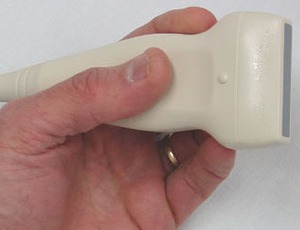
We report a case study of fat embolism seen on ultrasound at right internal jugular vein during central venous cannulation in a patient diagnosed with fat embolism syndrome. This case demonstrates the importance of ultrasound for evaluation of trauma cases with suspicion of fat embolism” Adi et al (2019). Abstract: BACKGROUND: We report a case […]
Central venous catheter-associated thrombosis in children with congenital hyperinsulinism

To our knowledge, this is the first study to evaluate CVC-associated thrombosis in patients with congenital hyperinsulinism (CHI)” Yau et al (2019). Abstract: SUMMARY: Congenital hyperinsulinism (CHI) is an important cause of severe hypoglycaemia in infancy. To correct hypoglycaemia, high concentrations of dextrose are often required through a central venous catheter (CVC) with consequent risk […]
Depression and quality of life in older adults on hemodialysis

The aim of this study was to evaluate the prevalence of depression, its associated factors and its impact on quality of life in an older population on hemodialysis” Alencar et al (2019). Abstract: OBJECTIVE: Depression is highly prevalent in hemodialysis patients, but few studies have evaluated older hemodialysis patients. The aim of this study was […]
Risk factors for central line-associated bloodstream infections in children

The aim of this study was to examine the epidemiology of CLABSIs in tunneled CVCs and analyze their risk factors in a general pediatric population” Paioni et al (2019). Abstract: BACKGROUND: Central line-associated bloodstream infections (CLABSIs) are among the most common complications of central venous catheters (CVCs). The aim of this study was to examine […]
Femoral venous catheter in extremely low-birth-weight infants

To assess the applicability of the insertion of small diameter catheters through the femoral vein in extremely low-birth-weight (ELBW) infants” Bergón-Sendín et al (2019). Abstract: OBJECTIVE: To assess the applicability of the insertion of small diameter catheters through the femoral vein in extremely low-birth-weight (ELBW) infants. STUDY DESIGN: All femoral small diameter catheters (Silastic or […]
Clinical outcomes and economic impact of hemodialysis
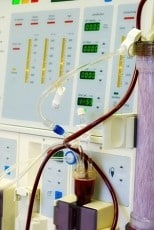
We compared patients with pre-ESRD fistula surgery who initiated dialysis with a catheter versus a fistula in terms of the frequency of post-dialysis vascular access procedures and complications and their economic impact” Al-Balas et al (2019). Abstract: BACKGROUND: Patients with advanced chronic kidney disease frequently undergo arteriovenous fistula creation prior to reaching end-stage renal disease […]
Microbiology and prevalence of E2SKAPE-resistant strains in CRBSI

The aim of this study was to describe the microbiology of catheter-related bloodstream infections (CRBSIs) in cancer patients and to compare the prevalence of MDR ESKAPE microorganisms (Enterococcus faecium, Staphylococcus spp, Klebsiella spp, Acinetobacter baumannii, Pseudomonas aeruginosa, and Enterobacter spp) plus Escherichia coli (E2SKAPE)” de la Cruz-Hernández et al (2019). Abstract: INTRODUCTION: Central venous catheters […]
PICCs and central venous disease in hemodialysis patients

PICCs can cause CVD, and the basilic vein, which is regarded as the important last option for native arteriovenous fistula (AVF) creation in end-stage renal disease (ESRD) patients, is destroyed frequently after its use as the entry site of PICC” Park et al (2019). Abstract: Central venous disease (CVD) is difficult to treat and often […]
Peripherally inserted central catheters in critically ill newborns

The aim of this study was to retrospectively analyze the use of PICCs in our clinic for critically ill newborns to evaluate the relationship between catheter related factors and the occurrence of complications” Li et al (2019). Abstract: Peripherally inserted central catheters (PICCs) can provide nutritional and medical support for very low birth weight or […]
Safety of umbilical catheters and PICCs for VLBW infants

The incidence of complications associated with the use of UVCs and PICCs in VLBW infants did not significantly differ in our study” Konstantinidi et al (2019). Abstract: Background and Objective: Peripherally inserted central catheters (PICC) and umbilical venous catheters (UVC) are frequently used for vascular access in neonatal intensive care units (NICUs). While there is […]
Novel flow-controlled syringe infusion pump for precise and continuous drug delivery

This study compares the performance of a prototype flow-controlled syringe pump both at start-up, and during vertical displacement manoeuvres, with that of a standard infusion syringe pump” Batliner et al (2019). Abstract: Syringe infusion pumps are used for the administration of short-acting drugs in anaesthesia and critical care medicine, but are prone to flow irregularities […]
Syringe infusion pump with absolute piston displacement control

A vast majority of syringe pumps operate on stepper motors, which limits their effectiveness for precision fluid delivery using estimation algorithms” Ong et al (2019). Abstract: A vast majority of syringe pumps operate on stepper motors, which limits their effectiveness for precision fluid delivery using estimation algorithms. Such a system also hampers the ability to […]
Flushing of an intravenous catheter and unreliable laboratory results

This case underlines the importance of caution in the interpretation of laboratory results obtained from specimens that are collected in the proximity of an intravenous catheter, even in the absence of continuous infusion” Hengeveld et al (2019). Abstract: INTRODUCTION: Phlebotomy is an error-prone process in which mistakes are difficult to reveal. This case report describes […]
Ultrasound guidance for central venous access

Ultrasound-guided central line placement has been shown to decrease the number of needle puncture attempts, complication, and failure rates. In order to obtain successful central access, it is important to have adequate cognitive knowledge, workflow understanding, and manual dexterity to safely execute this invasive procedure” Leibowitz et al (2019). Abstract: Ultrasound-guided central line placement has […]
Systematic review of central-line-associated bloodstream infection

To establish the reliability of the application of National Health and Safety Network (NHSN) central-line-associated bloodstream infection (CLABSI) criteria within established reporting systems internationally” Larsen et al (2019). Abstract: OBJECTIVE: To establish the reliability of the application of National Health and Safety Network (NHSN) central-line-associated bloodstream infection (CLABSI) criteria within established reporting systems internationally. DESIGN: […]
Quality improvement initiative to decrease CLABSI in the pediatric units

The specific aims of the study were to evaluate adherence to the intervention components and rates of Central Line Associated Bloodstream Infections (CLABSIs) over five years” Santos et al (2019). Abstract: INTRODUCTION: Central Venous Catheters (CVCs) are placed in pediatric patients that require frequent and/or long-term access for intravenous treatments and increase the risk for […]
Suitability of PICC for cardiac output assessment?

We investigated the agreement between transpulmonary thermodilution measurements obtained with bolus injection through peripherally inserted central catheter and centrally inserted central catheter (reference standard) using a transpulmonary thermodilution-calibrated Pulse Contour hemodynamic monitoring system (VolumeView/EV1000)” D’Arrigo et al (2019). Abstract: OBJECTIVES: Peripherally inserted central catheters are increasingly used in ICU as an alternative to centrally inserted […]
Comparison of complication rates associated with different PICC types

This retrospective cohort study evaluates the influence of PICC type on the rates and incidences of complications” Scrivens et al (2019). Abstract: Patients with hematological malignancies (HM) or undergoing hematopoietic cell transplantation (HCT) require reliable vascular access. Peripherally inserted central catheters (PICC) meet this need, however, studies suggest these patients have higher rates of PICC-associated […]
Incidence of peripheral intravenous catheter failure among inpatients
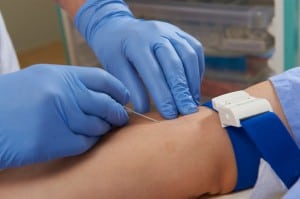
We aimed to estimate the rate and incidence of PIVC failure at Manacor hospital (Spain) as baseline within a wider quality improvement initiative” Blanco-Mavillard et al (2019). Abstract: BACKGROUND: Peripheral intravenous catheters (PIVCs) are the most widely used invasive devices among inpatients. Catheter-related bloodstream infections (CRBSI) are serious yet preventable events for patients. Although the […]
Vascular access strategies for early stage breast cancer patients

All vascular access strategies for administering chemotherapy in early stage breast cancer (EBC) are associated with risks and benefits. As the most effective type of access is unknown a feasibility trial, prior to conducting a large pragmatic trial, was undertaken” Robinson et al (2019). Abstract: PURPOSE: All vascular access strategies for administering chemotherapy in early […]
Cause of oxygenated blood from central venous catheter?

Here, we report a case of PAPVC which was missed initially in a follow-up case of atrial septal defect with mitral stenosis patient who was taken up for mitral valve replacement, and after insertion of central venous catheter, there was aspiration of oxygenated blood from the catheter tip causing confusion of arterial migration of central […]
Hand hygiene compliance surveillance with time series anomaly detection

The objective of this study was to use a novel time series anomaly detection algorithm to analyze routine hand hygiene compliance data” Wiemken et al (2019). Abstract: Background: Hand hygiene is the most important intervention to reduce the risk of transmission of pathogens in health care. Assurance of effective hand hygiene improvement campaigns includes adequate […]
Repositioning of malpositioned PICC with intracavitary electrocardiogram

We discuss a novel technique of utilizing intracavitary electrocardiogram to help confirm proper peripherally inserted central catheter tip repositioning, thereby reducing the need for serial radiographs” Weber et al (2019). Abstract: INTRODUCTION: Peripherally inserted central catheter tip migration is an infrequent event that occurs in neonatal, pediatric, and adult patients. We discuss a novel technique […]
Safety of sodium citrate and sodium heparin catheter lock solutions

The effects of different concentrations of heparin and different types of catheter lock solutions are controversial. Therefore, this study aimed to compare the efficacy and safety of sodium citrate and sodium heparin catheter lock solutions” Huang et al (2019). Abstract: Objective: Use of a catheter lock solution plays a decisive role in vascular access. The […]
Protocol for needle-free connector with positive displacement
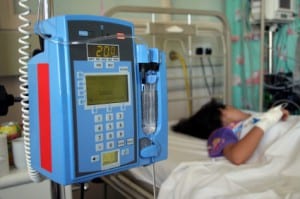
We have been using needle-free connectors for several years in our intensive care unit and here we present a protocol for installing these connectors on central venous catheters” Clavier et al (2019). Abstract: Needle-free connectors were initially designed and promoted to avoid blood exposure for healthcare workers. Some recent data suggest that the latest generation […]
Experience with OPAT and peripherally inserted central catheters
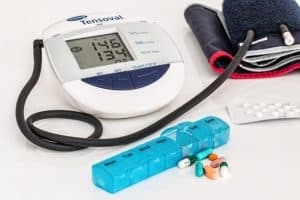
The implementation of an outpatient i. v. therapy using peripherally inserted central catheters (PICCs) allows for early discharge with continuation of adequate antimicrobial therapy” Baecker et al (2019). Abstract: BACKGROUND: A key factor in the successful treatment of periprosthetic joint infection is the consistent antimicrobial therapy. Depending on the pathogen antimicrobial susceptibility, intravenous (i. v.) antibiotics may […]
Initiation of maintenance hemodialysis through central venous catheters
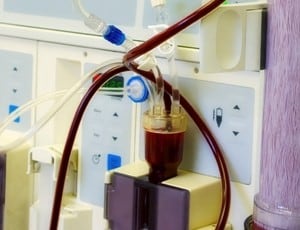
Despite well-publicized suggestions to utilize arteriovenous fistulae and grafts to initiate hemodialysis, too many patients in the United States start dialysis via central venous catheters” Tang et al (2019). Abstract: BACKGROUND: Despite well-publicized suggestions to utilize arteriovenous fistulae and grafts to initiate hemodialysis, too many patients in the United States start dialysis via central venous […]
Stakeholder perceptions of smart infusion pumps and drug library updates

Results of a questionnaire-based study to evaluate smart infusion pump end users’ perceptions and understanding of the drug library update process are reported” Delaurentis et al (2019). Abstract: PURPOSE: Results of a questionnaire-based study to evaluate smart infusion pump end users’ perceptions and understanding of the drug library update process are reported. METHODS: The Indianapolis […]
Antibiotic lock therapy for CLABSI in pediatric patients

The aim of this study was to evaluate the outcome of antibiotic lock therapy in bloodstream infections in pediatric hematology/oncology patients in a tertiary care hospital, Karachi” Qureshi et al (2019). Abstract: BACKGROUND: Intravascular catheters are susceptible to infections, thus requiring catheter removal and leading to increased morbidity and costs. Antibiotic lock therapy (ALT) is […]
Bedside prediction of the central venous catheter insertion depth

We conclude that both landmark guidance and ECG guidance are comparable with regard to accurate central venous catheter tip positioning when CVCs are placed through right internal jugular vein whereas formula based technique is least accurate and results in over insertion of CVCs” Jayaraman et al (2019). Abstract: BACKGROUND AND AIMS: Central venous catheterization is […]

